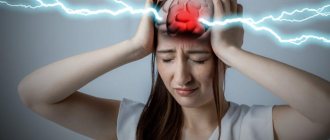Epidemiology
Most often, paraphrenia affects men aged 18-29 years and women aged 23-33 years. Moreover, the risk of deviations increases significantly in spring and autumn during exacerbations of various diseases. The disorder is also more likely to occur in people who were born in the spring and winter.
In children, paraphrenic syndrome practically does not occur. The first mild signs of pathology can be detected only in adolescence, when the child develops psychosis and affective-delusional ideas.
It is impossible to calculate the number of all cases of the disease, since not every patient seeks help from a specialist. Usually people do not understand what is happening to them and generally do not pay attention to changes in their well-being. They are sure that they do not need any help. Others, on the contrary, go to see a therapist with complaints. But a general practitioner cannot always determine the presence of a disorder.
The line between lies and illness
Paraphrenic syndrome can be confused with a love of fantasy. For example, the schizoid type is characterized by withdrawal into their inner world and their fantasies. Inventing his own world, a person meanwhile begins to believe that everything is really as he imagined. In paraphrenia, false stories are also observed, but if in schizoid disorder they always go in one line, then in a delusional patient they are always different, changing and not consistent with each other.
Fictional characters are not just non-existent people, they are those who simply cannot exist in the world: people with tentacles and three heads, deceased famous personalities. Even if you catch such a delusional patient in a lie, you can be sure that he will continue to assure that all this is actually true. Paraphrenic syndrome manifests itself in everything except the verisimilitude of statements, they are always untruthful, and any sane person can understand this.
Causes
The reasons for the development of paraphrenic syndrome are still not fully known, even though the diagnosis has been known for more than a hundred years. Most often, the deviation is found in the clinical picture of schizophrenia, delusional disorders and other disorders of the nervous system. But the causes of these diseases are also unknown.
Scientists suggest that the syndrome may arise due to genetic mutations during the development of the fetus in the womb, a hereditary factor, the neuronal development of the baby in the prenatal period, various changes in the structure of the brain and many unfavorable social factors.
Most experts believe that the main reason for the progression of the syndrome is the placement of a person predisposed to mental disorders in certain conditions of the social environment. In this case, it is possible to identify hidden complexes in the sexual sphere:
- Exhibitionism – showing the genitals and one’s body to others, achieving sexual satisfaction through this;
- Homosexuality is sexual contact between people of the same sex;
- Castration complex is a mental disorder in a child, which is manifested by fear of castration and loss of genital organs;
- Incestuous – intimate relationships with blood relatives.
Persecution mania and delusional ideas can arise due to excessive alertness, suspicion and attention of parents who exercise total control. Disagreements in personal life, conflict situations in the workplace, frequent use of psychotropic drugs, various diseases, drug and alcohol abuse, imprisonment or even religious sects can also lead to disruption of the brain, and therefore the development of the syndrome. When the causes of the disease are clear, the likelihood of progression to paranoia, paraphrenia or parnoid is significantly reduced.
Is it possible to warn?
The main method of prevention is timely diagnosis and treatment of the main provoking disease, as well as preventing the development of complications. The medical literature notes that the use of psychotropic drugs in the treatment of schizophrenia entails a reduction in the number of patients with paraphrenic syndrome.
In addition, the creation of a favorable emotional atmosphere plays a significant role in preventing the occurrence of this pathology. This should include the attention and care of parents for their children, the absence of quarrels in the family, visiting a psychologist, and avoiding conflict situations at work.
The use of psychotropic medications must be agreed upon with the attending physician. In addition, you should not succumb to the negative influence of others with suggestions about using drugs and alcoholic beverages.
Symptoms
Paraphrenic syndrome has a wide range of symptoms and manifests itself individually in each new case. It is believed that among the first three main signs of the disease are the presence of:
- Hallucinations, pseudohallucinations - the patient sees next to him unreal images of non-existent characters, talks about fantastic events taking place in his life that are completely divorced from reality.
- Mental automatism, suggesting that the patient’s own thoughts and actions are recognized as inspired by society. The disorder occurs simultaneously with delusional disorder.
one of the symptoms of paraphrenic syndrome: delusions of grandeur
Delusional ideas, including delusions of grandeur and persecution, when the patient regularly feels the participation of other people in his life (imaginary illusion).
Patients with paraphrenia become especially noticeable compared to healthy people when they are euphoric and very happy about something. It is at such moments that they consider themselves real rulers of the entire Universe and are capable of any action. During an attack of the disorder, patients may feel like famous writers or outstanding scientists. Some attribute to themselves such fantastic traits and unrealistic superpowers that they themselves cannot understand who they are. Along with this, hallucinations arise.
Speech also gives away a person with paraphrenia. She is solemn, commanding, emotional. She is able to inspire confidence in other people, convincing everyone that she is right, and also call on others to take decisive action. At the same time, delusional ideas are often supported by the statements of great classics and quotes from literature.
Those who are ill are constantly preparing for an upcoming grandiose event known only to them, for example, the impending end of the world or an alien invasion. Such unrealistic stories each time acquire new characters and increasingly rich colors. In addition, the patient begins to sincerely believe that his life is protected by real heroes, who once again emphasize his importance and increase self-esteem.
Quite often, the main symptom of paraphrenia is the delusion of a negative double, which was first described by Kapgrom. The patient believes that his close relative, or himself, has been replaced by an invisible double and it is he who commits all the negative actions. Over time, a person begins to get confused in personal relationships, not understanding who is a relative and who is a stranger.
Stages
Paraphrenic syndrome can act as one of the stages of various mental disorders. Experts include such deviations:
- Acute paraphrenia. The disorder is manifested by frequent bouts of delirium. The trigger for pathology is recent changes in a person’s life that bring significant inconvenience. In this case, the syndrome manifests itself as schizophrenia or symptoms of acute psychosis.
- Fantastic paraphrenia. This state is characterized by the ideas of omnipotence, power, greatness and wealth. The patient may experience hallucinations and partial loss of orientation in space.
- Chronic paraphrenia. Monotony of speech, a rather meager vocabulary, incoherent expressions and phrases, human lethargy - such symptoms are the main sign of this type of disorder.
Varieties of the syndrome
As already mentioned, paraphrenic syndrome is characterized by delusions, mental automatisms, hallucinations and pseudohallucinations. These conditions can be combined in various ways:
- Hallucinatory variant, based on perceptual disturbances. The patient exhibits pseudohallucinations and mental automatisms. Delusional ideas are weakly expressed.
- Depressive or melancholic paraphrenia - delusions associated with feelings of guilt, denial or punishment predominate. The patient believes that he brings only evil to the people around him. Characterized by disturbances in self-awareness and depression.
- With confabulatory paraphrenia, delusions of grandeur are most pronounced, combined with retrospective delusions and pseudohallucinations. In this regard, memory disorders are possible.
- A systematic disorder is manifested by delusions of persecution against the background of fantastic ideas. Auditory hallucinations and aggressiveness are characteristic. No memory impairments are detected.
- With manic or expansive paraphrenia, hyperactivity appears in combination with delusions of grandeur.
In addition to this classification, experts distinguish acute and late paraphrenia. The chronic form is characterized by a formed delusional system that can develop over months or years. In addition to delirium, speech disorders are detected. The patient has incoherent speech with broken individual sentences.
Acute paraphrenia develops in the form of paraphrenic psychosis. In this case, against the background of manic or depressive changes, pseudohallucinations and delusions are diagnosed.
There are also specific types of disorders:
- Involutionary type, associated with a combination of delusions of persecution and delusions of grandeur. Patients consider themselves an important figure in world events or the authors of important ideas, which are monitored by intelligence agencies, etc.
- The presenile type occurs in people aged 45 to 55 years, more often in women. Paraphrenia is associated with incipient degenerative changes in the frontal lobe cortex against the background of atherosclerosis and other somatic diseases. Symptoms are based on delusions of grandeur, which include visions of a sexual nature. In this case, aliens, God and other creatures often act as sexual partners.
- Late or senile form. Occurs in senile schizophrenia after the age of 70 years. Patients complain about their own uselessness for others, a negative attitude towards themselves on their part.
Identification of the specific type of paraphrenic syndrome is necessary for individual treatment. The prognosis does not depend on the prevailing clinical symptoms and is associated with the number of exacerbations.
Forms
In psychiatry, paraphrenic syndrome is usually divided into several types:
- Systematized paraphrenia. He is distinguished by regular attacks of delusional ideas and special confidence in his own greatness and superiority. The patient also believes that he has his own double, who commits all negative actions.
- Hallucinatory paraphrenia. It is characterized by the fact that the patient constantly sees unreal characters and is in a fictitious place. Moreover, he is completely sure that all mythical heroes really exist.
- Confabulatory paraphrenia. A condition that develops against the background of two previous types of syndrome. The sick person is disturbed by delusions of grandeur along with false memories of his own exploits and actions.
Diagnostics
Diagnosis of the syndrome does not include any laboratory or instrumental studies. In rare cases, neurological examinations of the brain may be necessary. It is known that paraphrenia does not affect the functioning of the nervous system, which means this study will show the absence of deviations. The main task is given to differential diagnosis, which confirms the diagnosis and determines the form and stage of the disorder.
In its manifestations, the anomaly is predominantly similar to paranoid, paranoid disorder and many other mental disorders. The syndrome must be distinguished from attacks of delirium that occur as a result of psychosis or the use of narcotic substances or psychotropic drugs.
As an independent anomaly, paraphrenic syndrome can develop extremely rarely. That is why it is important to determine which specific disease accompanies the pathology. Only by eliminating the main cause of disease progression can a speedy recovery of the patient be achieved.
The following painful phenomena are characteristic of paraphrenia:
- A symptom of false recognition, when in unfamiliar people around them they see other, important persons participating in their lives.
- Fantastic delirium of grandeur.
- Increased mood (less often decreased), euphoria.
- Confabulations are false memories. The patient feels that he remembers certain events. However, in reality these events did not happen.
The causes of paraphrenia are gross disturbances of metabolic processes in the brain, overexcitation of subcortical structures.
Treatment
Complete recovery of a patient with paraphrenia is only possible if a specialist has thoroughly studied the patient’s medical history and learned about all the manifestations of the syndrome. This is especially important because the pathology manifests itself individually in each person, which means that in each new case it requires a special approach. For example, even the emotional state of patients can differ significantly: one arrives in constant euphoria, another complains of a depressive disorder.
Almost all patients are prescribed antipsychotics, which help cope with psychotic disorders: get rid of suspiciousness, increased excitability, hallucinations and delusional disorders. Preference is given to the group of atypical antipsychotics “Ketilept”, “Servitel”, “Rispolpt”. Since most patients forget to take medications, specialists can prescribe long-acting medications.
The remaining signs of the disease should be treated individually, depending on the frequency and strength of their manifestations. For example, patients with depressive disorder need to take antidepressants Doxepin, Paroxetine, Melitor and psychotherapy sessions.
Treatment of the syndrome can be carried out both outside a medical institution and in a hospital. It is worth saying that complete recovery of a sick person in old age is almost impossible, since all mental changes usually become irreversible.
Treatment approaches
Treatment of paraphrenic syndrome includes the use of medications and non-drug approaches. Therapy should be comprehensive and based on the individual characteristics of the patient and the course of the disease.
Treatment of acute paraphrenia
Therapy begins with the relief of an acute attack. For this, it is recommended to use antipsychotic drugs with pronounced antipsychotic activity - Olanzapine, Aminazine, Tizercin, etc. The latter is recommended for use in patients with melancholic disorders. If the patient has psychomotor agitation, then the drug of choice is Diazepam.
In addition to eliminating the acute attack, it is necessary to eliminate affective disorders. In the presence of depressive affect, antidepressants are prescribed:
- tricyclic drugs: Amitriptyline and its analogues;
- selective serotonin reuptake blockers: Fluoxetine, etc. (this group of drugs is recommended for use in patients with depressive paraphrenia).
In case of pronounced manic affect, mood stabilizers - lithium preparations - are prescribed simultaneously with neuroleptics. Their use allows you to normalize psychomotor agitation.
After stabilization of the condition, anti-relapse treatment begins. The main task of this stage is to prevent the development of repeated attacks. The duration of therapy depends on the number of exacerbations: for a single episode - 6 months, for a repeated episode - 2 years, for three or more exacerbations - for life. Antipsychotics are used: Olanzapine or Rispolept. Drugs in low dosages do not have side effects, but have a significant therapeutic effect.
Treatment of chronic paraphrenia
Hospitalization for the chronic form of paraphrenic syndrome is not indicated. Treatment is carried out on an outpatient basis under the supervision of a psychiatrist. Therapy is based on the use of medications:
- neuroleptics (Risperidone, Olanzapine, etc.) in low dosages to prevent delusions and hallucinations (they are highly effective and can be used for life);
- antidepressants (Fluoxetine, etc.) in the presence of melancholic paraphrenia. Take until symptoms of depression disappear.
Normotimics (lithium salts), anticonvulsants (valproic acid) and other symptomatic drugs can also be used. Medicines are used only after being prescribed by the attending physician, since they all have a fairly wide list of contraindications.
Psychotherapy is important in anti-relapse treatment. Individual consultations with a psychotherapist are recommended for patients with paraphrenic syndrome. The specialist helps the patient in social rehabilitation and in solving personal problems.
Prevention
Prevention of the disease is necessary when there are prerequisites for the development of the syndrome. This could be a genetic predisposition, brain disorders, or even frequent conflict situations in the family.
To prevent the occurrence of an anomaly at a young age, it is first necessary to create a favorable environment for the child. Love, care, friendly relationships in the family and good upbringing automatically prevent the risk of developing a deviation. In some cases, the help of a psychotherapist may be needed. Such work can stop the progression of the disease even in its embryonic stage.
It is more difficult for an adult to prevent the occurrence of a disorder, but everything is still possible. To do this, you should avoid stress and conflict situations in the family and at the workplace; give up bad habits; walk in the fresh air and go out into the countryside as often as possible; try to eat rationally and correctly. Such simple techniques will also help improve the general condition of the body, increase efficiency, and also lift your mood.
Forecast
The prognosis for paraphrenia can be ambiguous, since the course of the syndrome and its treatment depend on the person’s psyche. Statistics show that only 10% of patients, after a long course of treatment, forget about their problem forever. In other cases, patients still continue to be bothered by at least minimal and rare attacks of delusional disorder.
But even if complete recovery does not occur, the sick person should not despair. If you undergo regular courses of treatment for your illness, by talking to a psychologist and taking medications, you can still return to normal life. The pathology does not affect memory, attention and thinking, does not cause any abnormalities in the functioning of the brain, and therefore is not life-threatening.











